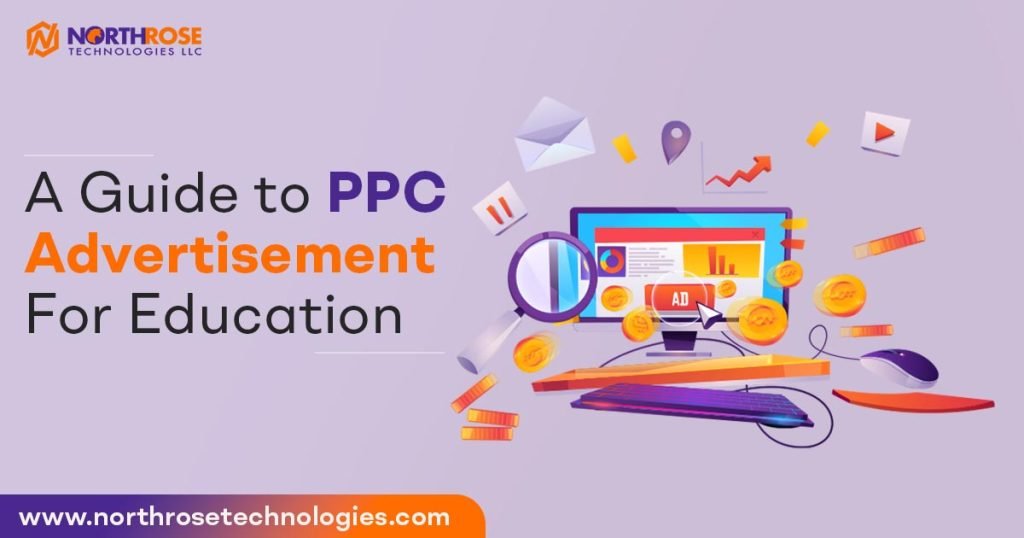Attracting prospective students to your university has become more challenging than ever in today’s competitive educational scene, with the rise of online presence being pertinent.
Pay-per-click (PPC) advertising campaigns are one of the most effective techniques for educational institutions to generate leads. How can you expect prospective pupils to locate you if you’re not visible online? This is where PPC comes in.
Understanding PPC Advertising for Education
PPC advertising is a powerful strategy in which advertisers incur a cost every time their ad is clicked on. These advertisements appear on search engines, websites, and social media platforms, providing an effective way of reaching a highly targeted audience.
Pay-per-click (PPC) advertising in the education sector can be a minefield of high costs and intense competition, but it remains one of the top marketing trends. It generates immediate results and leads while increasing your local and national presence.
Importance of PPC for Education
Since the majority of your target audience will begin their research online, digital marketing methods in general are critical to the education sector. You won’t be in front of your audience as they hunt for open days and course information if you don’t promote yourself online using methods like PPC.
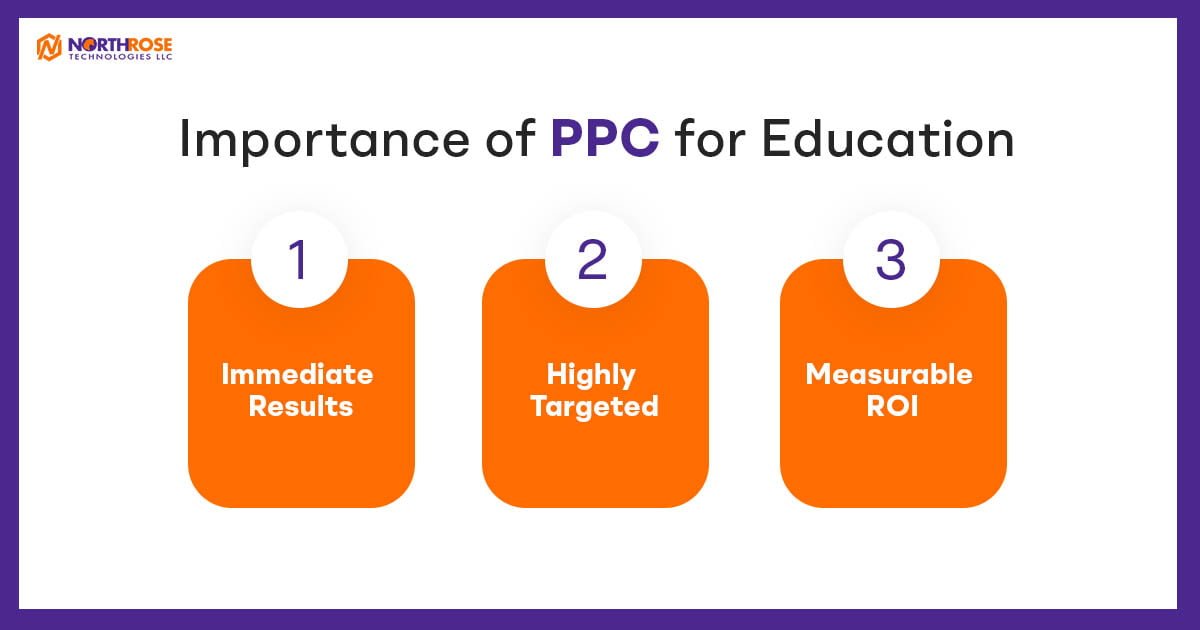
- Immediate Results:
PPC ads can produce instant results, making them excellent for universities looking to quickly increase enrollment.
- Highly Targeted:
PPC advertising enables precision targeting, ensuring that your advertising reaches the proper audience based on variables such as location, demographics, and search intent. This also helps improve your online visibility and brand presence.
- Measurable ROI:
These campaigns give precise statistics, allowing you to track and further optimize the performance of your adverts.
Types of PPC Campaigns for Education
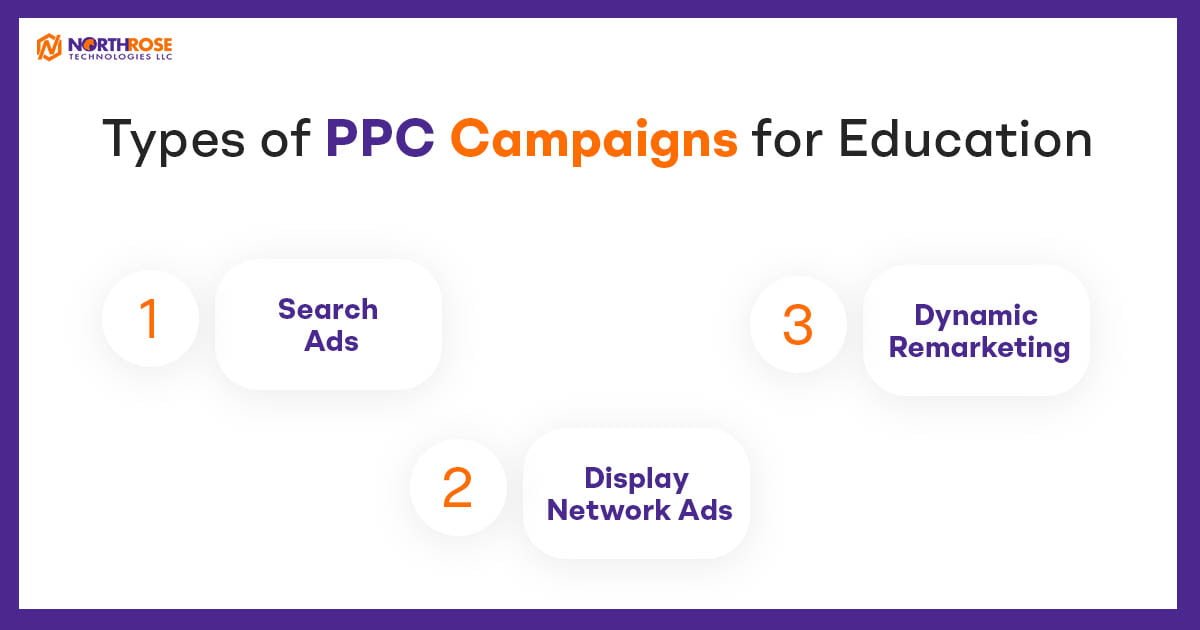
1) Search Ads
Search advertisements appear in search engine results pages (SERPs) when users search for relevant terms. These advertisements enable educational institutions to promote their programs and attract students who are actively looking for educational opportunities.
2) Display Network Ads
Display advertising, that appears on websites connected to the topics of interest, can be utilised to reach a large audience. These advertisements are often visually appealing, such as images or videos, and can be used to promote certain programs or activities about your institution. There is a huge distinction between Display Ads and Navite Ads.
3) Dynamic Remarketing
Dynamic remarketing is a type of retargeting that enables educational institutions to offer users personalized ads based on their interactions with the institution’s website.
For example, if a person views an educational institution’s website but does not enroll, the university can offer them an ad for a relevant program that is presently accepting applications.
When creating remarketing advertising, keep in mind where your audience is in the sales funnel, not where you want them to be. It’s pointless to direct an enrollment landing page to a student who hasn’t decided on a course or has inquiries about the pricing.
Ways PPC Advertisement Can Increase Leads for the Education Industry
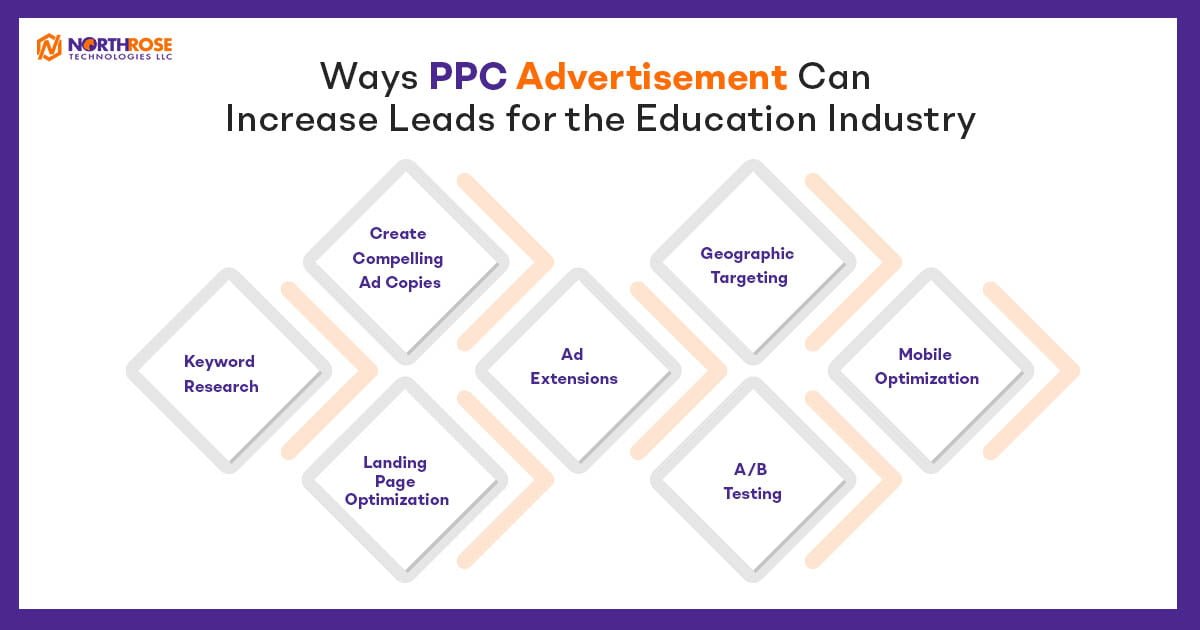
1) Keyword Research
Thorough keyword research is the foundation of a successful PPC campaign. Determine the terms and phrases that prospective students are likely to use when looking for educational programs.
To find high-converting keywords, use keyword research tools such as Google Keyword Planner and SEMrush. There are usually three categories of keywords – transactional, informational and navigable.
Did you know? Negative keywords are equally significant for educational establishments. Negative keywords can help you avoid wasting money on unqualified leads by preventing irrelevant searches from activating your advertising.
2) Create Compelling Ad Copies
Create persuasive ad copies that not only illustrate your institution’s unique selling advantages but also address prospective students’ particular needs and concerns. To attract your audience’s attention, emphasize advantages, scholarships, and career possibilities.
3) Landing Page Optimization
Your website is one of the first things the user sees when approaching you online. When consumers click on your ads, you want them to land on a page that motivates them to convert.
Ensure that the landing pages linked to your PPC ads are conversion-optimized. Maintain a clean and user-friendly design, with website content that includes clear calls to action (CTAs) that encourage visitors to investigate or apply.
Including testimonials from current students is a good way to increase the legitimacy of your program and encourage more people to enroll.
4) Ad Extensions
Make your advertising more informational and compelling by using ad extensions. Ad extensions are an excellent way to add extra information to your ads and boost their visibility.
Site links, callouts, and structured snippets can add more information about your institution’s offers, making your adverts stand out.
Ad extensions can also help you improve your Quality Score, which is a metric used by search engines to determine the relevance and quality of your adverts. A better Quality Score can result in reduced CPCs and higher ad positions, making it easier for prospective students to come across your programs.
5) Geographic Targeting
You can use geo-targeting to display your advertising to users in specific regions. This is especially beneficial for colleges with various campuses or online programs, as it ensures that your advertisements reach the intended audience.
6) A/B Testing
Conduct A/B testing on your ad copy, landing pages, and other campaign pieces on a regular basis in order to identify what resonates most with your target demographic. Optimize your campaigns depending on the data acquired from these tests on a regular basis.
7) Mobile Optimization
Given the widespread use of mobile devices, make sure your PPC campaigns are mobile-friendly. Create responsive advertising and landing pages that work well on smartphones and tablets.
Tips for Effective PPC Campaigns in the Education Industry
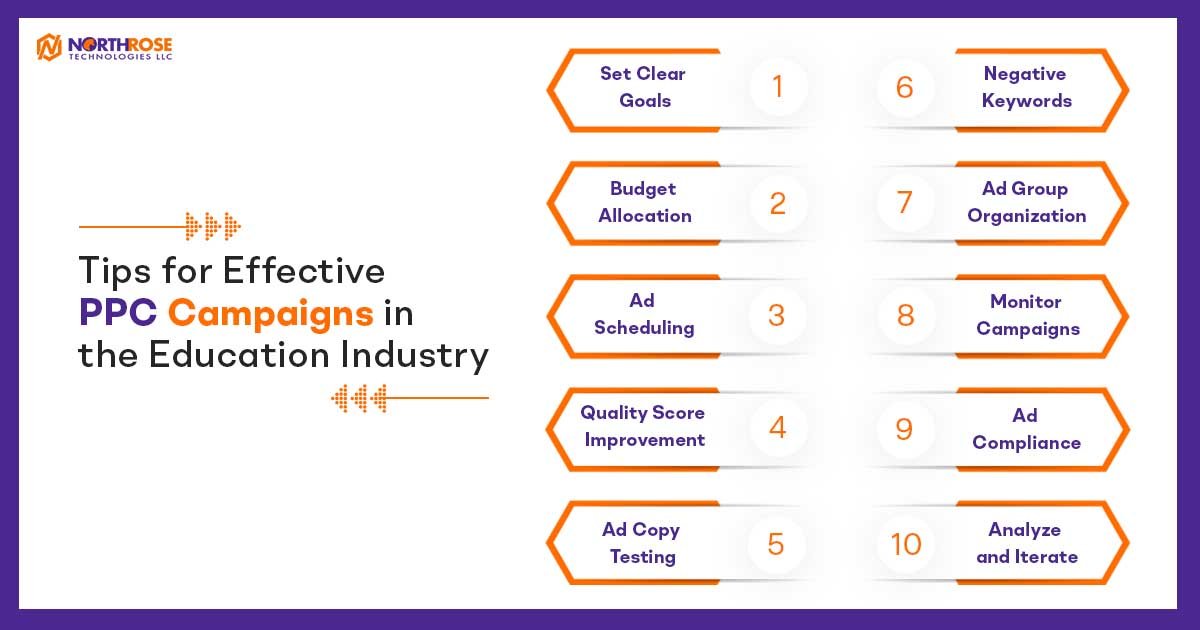
1) Set Clear Goals
Set defined and quantifiable objectives for your PPC ads. Having specific objectives will help guide your marketing plan seamlessly. It can be increasing enrollment, boosting traffic to your website, or generating leads.
2) Budget Allocation
Prioritize high-performing keywords and campaigns when allocating your funds. Regularly monitor your spending to guarantee you’re obtaining the maximum return on investment (ROI).
3) Ad Scheduling
Ad scheduling allows you to show your advertising when your target audience is most active. This can be especially useful for reaching out to working professionals who are interested in furthering their education.
4) Quality Score Improvement
Quality Scores are assigned to your advertising by Google based on characteristics such as relevancy, click-through rate, and landing page quality. Improve your Quality Scores to reduce your cost per click and increase ad placement.
5) Ad Copy Testing
On a regular basis, test different ad text variations to evaluate what performs best for your target market. To identify the winning combination, try out multiple headlines, descriptions, and CTAs.
6) Negative Keywords
Negative keywords can be used to filter out irrelevant traffic. This ensures that advertisements are only shown to users who are actually interested in what you offer, resulting in less wasted ad expenditure.
7) Ad Group Organization
Organize your campaigns into ad groupings that are carefully themed. This enables more precise targeting and ensures that ad copy corresponds to the keywords selected.
8) Monitor Competitor Campaigns
Monitor your competitors’ PPC efforts to learn about their approaches. Examine their keywords, ad text, and landing sites for ways to improve your marketing efforts.
9) Ad Compliance
Adhere to education-specific advertising standards and guidelines. Make certain that your advertisements contain correct information about your institution and its programs.
10) Analyze and Iterate
Analyze the performance of your PPC campaigns on a regular basis using analytics tools such as Google Analytics and Google Ads. Make informed modifications and optimize your efforts based on the facts.
PPC advertising has evolved as an effective strategy for increasing leads for educational institutions in an era when the education business is intensely competitive.
North Rose Technologies helps you design efficient PPC campaigns that not only attract prospective students but also create real conversions by following the methods and tips suggested in this guide.

